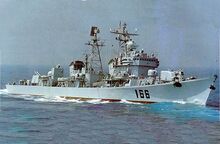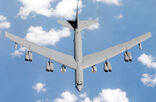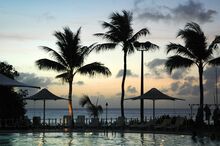Tano I' Man Chamorro (Chamorro) | ||||||||
| Anthem | ""Fanohge Chamoru" "Stand Ye Guamanians" "The Star-Spangled Banner" | |||||||
| Capital | Hagåtña | |||||||
| Largest City | Dededo | |||||||
| Other Cities | Santa Rita | |||||||
| Language Official |
English, Chamorro | |||||||
| Others | Filipino, Japanese | |||||||
| Religion Main |
Roman Catholicism | |||||||
| Others | Protestantism, Buddhism, folk religions | |||||||
| Ethnic Groups Main |
Chamorro, White Americans, African Americans | |||||||
| Others | Filipino, Japanese, Chuukese, Korean, Chinese, Palauan, Pohnpeian | |||||||
| Demonym | Guamanian | |||||||
| Government | Territorial presidential constitutional republic | |||||||
| Legislature | Legislature of Guam | |||||||
| Area | 540 km² | |||||||
| Population | 160,000+ | |||||||
| Established | 1565 (Part of Spanish East Indies) | |||||||
| Admission | 1898 (Captured by the United States) | |||||||
| Currency | US Dollar (USD, $) | |||||||
Guam (formally called the Territory of Guam) is an organized, unincorporated territory of the United States. Located in the northwestern Pacific Ocean, Guam is one of five American territories with an established civilian government. The island's capital city is Hagåtña. Guam is the largest and southernmost of the Mariana Islands, and the largest island in Micronesia.
History[]
Pre-WWIII[]
In early times, the island of Guam was inhabited by Polynesians. These Pacific islanders traveled to the surrounding nearby islands of the Pacific, even reaching to far flung islands such as Hawaii and the Easter Islands of Ecuador.
The island was discovered by Ferdinand Magellan on his way to the "Spice Islands" in which his men had a skirmish with the natives. Guam became part of the Spanish East Indies during the later parts of the 16th century. The Spanish East Indies were a group of islands in the Pacific comprising of the islands of present day Philippines, Palau, Guam, the Northern Mariana Islands, and Micronesia. The Spanish Empire possessed these islands for over 300 years before ceding Guam and the Philippines to the United States of America following its victory during the Spanish-American War. Guam and the Philippines became a U.S. territory following the war.
During World War II, the island was attacked by forces from the Empire of Japan and was occupied in 1941. Resistance continued throughout the island before it was liberated in 1944. Guam was then used as a base for long-range bombers of the United States Air Force, including the B-29, B-36, B-52, and B-1 Lancers. Prior to World War III, there were already long-range intercontinental bombers housed at the Anderson Air Force Base.
World War III[]

PLAN Luda Class destroyer during the blockade of Guam.

B-52 Bomber attacking People's Liberation Army Navy ships off the coast of Guam.
The U.S. Pacific fleet made Guam, the Northern Mariana Islands, the Philippines, Japan, and South Korea the primary defense priority following the outbreak of World War III in Europe, just in case of Soviet naval or aerial attack. In March 1990, China declared war on the United States and their allies. The Chinese launched a limited invasion force to Okinawa, the Philippines, Guam, and the Northern Mariana Islands. These invasions were not successful, as the Chinese never made much ground. In Guam, the Chinese attempted to blockade the island and land a force of 5000 men. The initial amphibious assault only got as far as Santa Rita. The blockade failed as ships and submarines from the U.S. Navy struck daily on the blockade. The U.S. Air Force took the B-52s and B-1s to the sky, dealing a heavy blow to the Chinese. By April 1990, the Chinese withdrew from Guam and let the Soviet bombers take care of it, but these bombers were challenged by the USAF. In the end, both the Soviets and the Chinese failed to capture or cripple the U.S. military bases in the island.
Modern Times[]

Sunset on a resort in Guam, 2011.
Guam only suffered moderate damages and casualties during the war. Reconstruction followed right after, and by the time the new millennium arrived, the island was back to pre-war levels. Today, Guam is a well known tourist attraction and military base for the United States.
Politics[]
Culture[]
Economy[]
Tourism is the main source of income of Guam, made famous by its beaches and mountains. The U.S. military contributes to the economy in a way by hiring civilian contractors to work in the bases around the island. Sources of livelihood include fishing, fruit exports, shell crafting, and wood gathering.
| ||||||||||||||||||




